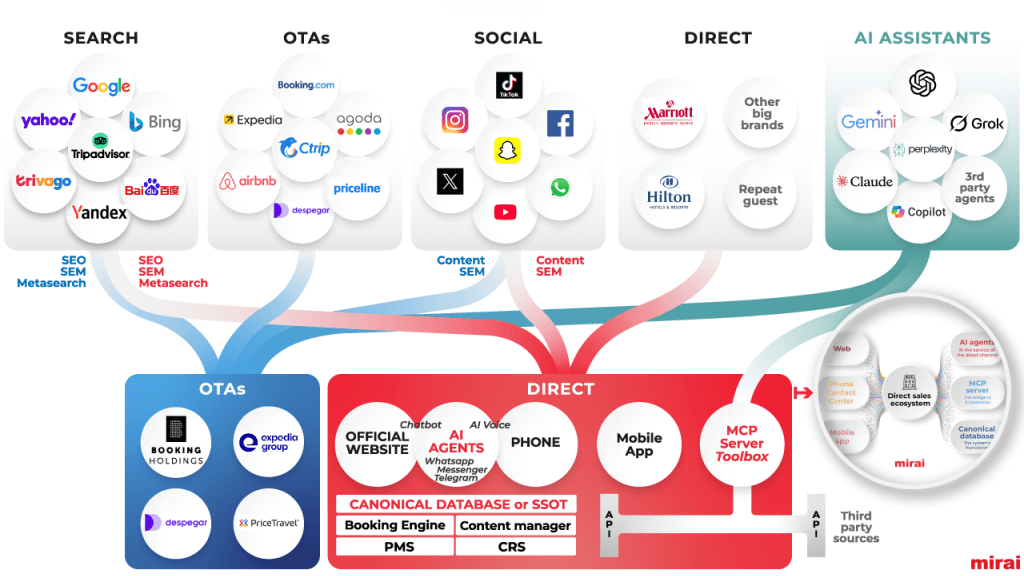
Imagine your hotel facing a forecast predicting a significant dip in bookings for the coming quarter. Do you rally your marketing and sales teams to launch innovative campaigns aiming to change the forecasted future? Or do you streamline your operations, optimizing every cost to ensure profitability despite the lower revenue?
NB: This is an article from Demand Calendar
Subscribe to our weekly newsletter and stay up to date
This article explores these two fascinating scenarios, exploring their benefits and hurdles from a hotel management perspective. We’ll also discuss the key measurements for success and how to implement each strategy effectively. Whether aiming to boost revenue or enhance operational efficiency, understanding these approaches will empower you to make informed decisions that drive your hotel’s success. So, let’s embark on this journey to uncover which strategy might be the key to unlocking your hotel’s full potential.
Scenario 1: Using Forecasts to Change the Future
Imagine a world where you can transform forecasted trends into opportunities for growth. You can reshape your hotel’s future and drive substantial revenue increases by leveraging revenue forecasts as a catalyst for proactive marketing and sales initiatives.
Benefits
- Revenue Growth:
- Proactively increasing bookings through targeted marketing and sales initiatives can significantly boost revenue.
- Ability to capitalize on market opportunities and trends.
- Market Responsiveness:
- Quick adaptation to changing market conditions and customer preferences.
- It enhanced competitive positioning by seizing opportunities before competitors.
- Customer Engagement:
- Personalized promotions and special offers can improve guest satisfaction and loyalty.
- Opportunities to build a stronger brand presence through creative campaigns.
Challenges
- Resource Allocation:
- Requires substantial investment in marketing and sales efforts, which can strain budgets.
- Potential misallocation of resources if campaigns do not yield expected results.
- Execution Risk:
- Uncertainty in the effectiveness of proactive measures.
- Risk of over-reliance on short-term campaigns rather than long-term strategies.
- Coordination and Timing:
- Need for precise coordination across departments (marketing, sales, operations).
- Timely execution is crucial to align with forecasted trends.
Hotel Operations Perspective
- Operational Flexibility: Hotels need to be flexible in their operations to support dynamic campaigns, which may involve rapid changes in staffing, inventory, and services.
- Innovative Culture: Fostering a culture of innovation and agility among staff to quickly respond to forecast insights.
Profit Optimization Perspective
- Revenue Upside: Higher potential revenue gains if proactive strategies are successful.
- Cost Implications: Higher marketing and operational costs must be carefully managed to ensure profitability.
Measurements for Success
- Revenue Growth:
- Actual vs. Forecasted Revenue: Compare actual revenue to forecasted revenue to assess the impact of proactive actions.
- Revenue Increase Percentage: Measure the percentage increase in revenue attributable to marketing and sales initiatives.
- Occupancy Rates:
- Actual vs. Forecasted Occupancy: Evaluate how well proactive actions have increased occupancy rates beyond the forecasted figures.
- Occupancy Rate Growth: Track the occupancy rate growth during proactive campaigns.
- Booking Rates:
- Booking Trends: Monitor booking trends pre- and post-intervention to determine the effectiveness of marketing and sales efforts.
- Lead Time: Measure changes in booking lead times as a result of proactive strategies.
- Customer Acquisition:
- New Customer Acquisition: Count the number of new customers acquired through targeted campaigns.
- Customer Retention Rates: Assess the retention rates of customers attracted through these initiatives.
- Return on Investment (ROI):
- Campaign ROI: Calculate the ROI of specific marketing campaigns and sales initiatives to ensure they are cost-effective.
- Overall ROI: Measure the overall ROI of the proactive strategy against the revenue gains achieved.
- Market Share:
- Market Share Growth: Track changes in market share due to proactive actions.
- Competitive Position: Assess the hotel’s competitive position before and after implementing proactive strategies.
Example
A forecast indicates a 30% drop in bookings for the next quarter. The marketing team launches a “Staycation” campaign targeting residents with discounted rates and special packages. Simultaneously, the sales team negotiates group bookings with local businesses for conferences and retreats. As a result, the hotel mitigates the forecasted drop and achieves a 10% increase in revenue.




